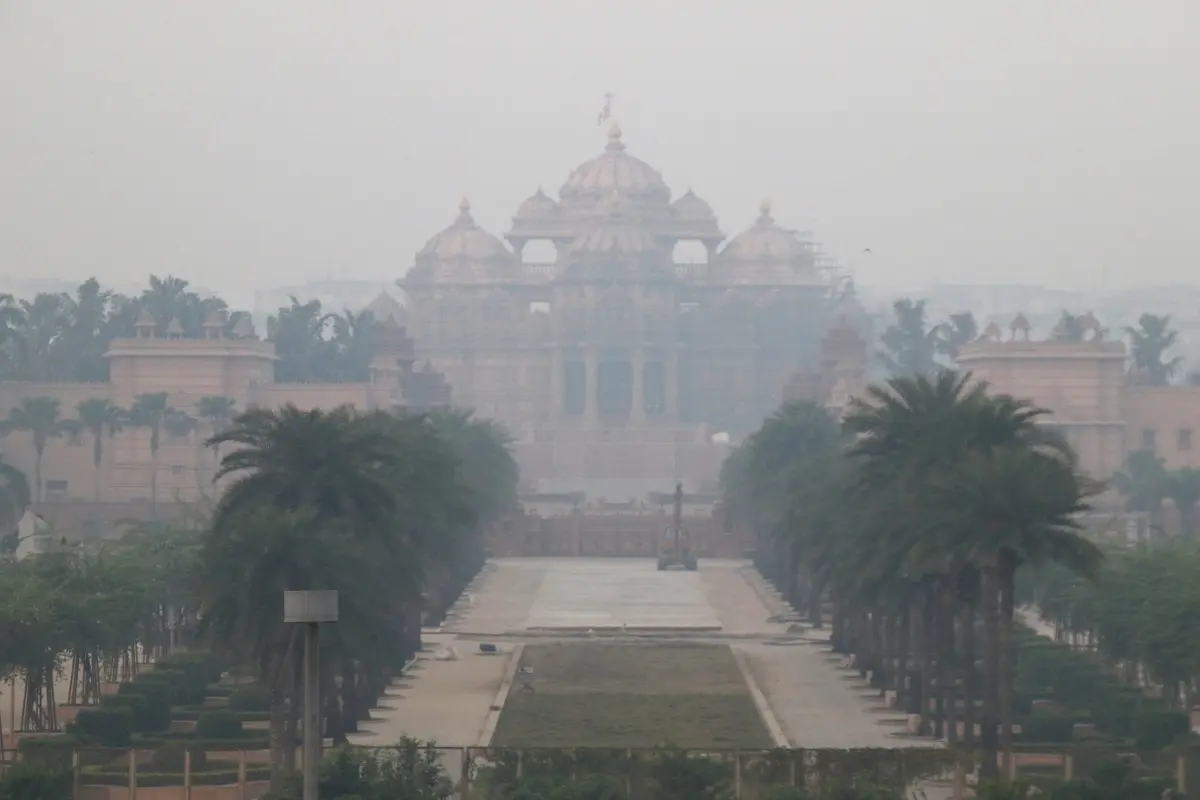
Air quality in Delhi-NCR plummeted further on Friday, with pollution levels nearing the ‘severe’ mark in multiple neighborhoods.
According to the Central Pollution Control Board (CPCB), the capital’s overall Air Quality Index (AQI) averaged 383, indicating hazardous conditions in many areas.
Several parts of Delhi saw AQI levels soar past 400, placing them firmly in the ‘severe’ category. This includes:
- Anand Vihar – AQI at 415
- Jahangirpuri – AQI at 447
- Wazirpur – AQI at 434
- Ashok Vihar – AQI at 418
- Mundka – AQI at 428
- Rohini – AQI at 439
Many other parts of the capital remained at ‘very poor’ levels, with Pusa Crossing at 361 and ITO at 349.
Across the broader Delhi-NCR region, cities like Faridabad, Gurugram, and Ghaziabad reported AQIs between 281 and 321, showing consistently poor air quality in the region.
In response, the Commission for Air Quality Management (CAQM) has intensified its pollution control efforts.
Through the Graded Response Action Plan (GRAP), CAQM has enforced tighter regulations on construction, industrial emissions, and vehicle inspections.
Measures include 600 mechanical road-sweeping machines, water sprinklers, and anti-smog guns deployed throughout NCR to curb road dust and particulate matter.
Delhi Govt Launches Anti-Open Burning Drive To Curb Pollution
Additionally, the Delhi government has launched a month-long anti-open burning initiative, which began on 6 November, aiming to reduce pollution from open burning of waste and biomass.
To strictly enforce this campaign, 588 patrolling teams will monitor construction sites and encourage alternatives to open burning.
Delhi’s Environment Minister Gopal Rai emphasized that the initiative requires collaboration from local governments, Resident Welfare Associations, and construction agencies.
They have been asked to provide electric heaters for security guards to reduce open fires for warmth.
Rai has also urged neighboring states to strengthen their own pollution control strategies to make a collective impact.
This anti-burning initiative is part of a broader 21-point Winter Action Plan, recently expanded from last year’s 14-point plan, which includes:
- Emergency measures like drone surveillance for pollution monitoring,
- Intensified dust control measures, and
- Strategic deployment of resources aimed at tackling the seasonal spike in air pollution
With the winter season setting in, Delhi-NCR residents are bracing for continued smog and pollution, while authorities work to enforce stricter measures in hopes of easing the ongoing crisis.
Also Read: PM Modi Honors BJP Veteran LK Advani On 97th Birthday; Calls Him A ‘Respected Statesman’
To read more such news, download Bharat Express news apps


















